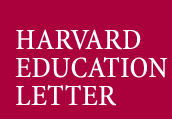
Ellen L. Kronowitz (California State University, San Bernardino)
2008 Pearson Education, Inc., U.S.A.
Induction
I touch the future. I teach.
Christa McAuliffe (teacher & first civilian in space)
The beginning is the most important part of the work.
Plato
What teachers know and can do, makes the most difference in what children learn.
Linda Darling-Hammond (teacher educator and researcher)
All the resources we need are in the mind.
Theodore Roosevelt
First Day
You don't have to see the whole staircase, just take the first step.
Dr. Martin Luther King, Jr.
At a round table, every seat is the head place.
German proverb
Clothes make the man.
Anonymous Latin Proverb
Clothes make the man. Naked people have little or no influence on society.
Mark Twain
We could learn a lot from crayons; some are sharp, some are pretty, some are dull, while others bright, some have weird names,
but they all have learned to live together in the same box.
Anonymous
The most important single ingredient in the formula of success is knowing how to get along with people.
Teddy Roosevelt
No one is ever old enough to know better.
Holbrook Jackson (English journalist)
Classroom Organization & Management
Knowledge is always accompanied with accessories of emotion and purpose.
Alfred North Whitehead
A student wants some kind of undisrupted routine or rhythm. He seems to want a predictable, orderly world.
Abraham Maslow
For every minute spent in organizing, an hour is earned.
Anonymous
Habits are cobwebs at first; cables at last.
Chinese Proverb
Great discoveries and improvements invariably involve the cooperation of many minds.
Alexander Graham Bell
Never trust a computer you can't throw out a window.
Steve Wozniak (co-founder Apple Computers)
The Internet is a giant international network of intelligent, informed computer enthusiasts, by which I mean,
"people without lives." We don't care. We have each other...
Dave Barry (humorist)
Positive Discipline
It is our continuing love for our children that makes us want them to become all they can be,
and their continuing love for us that helps them accept healthy discipline -- from us and eventually from themselves.
Fred Rogers (Mr. Rogers)
People's behavior makes sense if you think about it in terms of their goals, needs, and motives.
Thomas Mann (German novelist and essayist)
All human actions have one or more of these seven causes:
chance, nature, compulsion, habit, reason, passion, and desire.
Aristotle
Prevention is better than cure.
Proverb
No method nor discipline can supersede the necessity of being forever on the alert.
Henry David Thoreau (American poet, lecturer and essayist)
If I want to be great I have to win the victory over myself...self-discipline.
Harry S. Truman
When a teacher calls a boy his entire name, it means trouble.
Mark Twain
Planning & Organizing Subject Matter
A man who does not plan long ahead, will find trouble right at his door.
Confucius
It pays to plan ahead. It wasn't raining when Noah built the ark.
Anonymous
The best things in life are free.
American Proverb
I am not authorized to fire substitute teachers.
Bart Simpson (cartoon character)
Engaging All Learners
If you accept the expectations of others, especially negative ones, then you never will change the outcome.
Michael Jordan
A master can tell you what he expects of you. A teacher, though, awakens your own expectations.
Patricia Neal (actress)
I never teach my pupils; I only attempt to provide the conditions in which they can learn.
Albert Einstein
We have become not a melting pot but a beautiful mosaic.
Jimmy Carter
El que sabe dos lenguas, vale for dos.
(He who knows two languages is worth double.)
Spanish maxim
Saber es poder.
(Knowledge is power.)
Spanish maxim
Assessing & Communicating Student Progress
One had to cram all this stuff into one's mind for the examinations, whether one liked it or not.
This coercion had such a deterring effect on me that, after I had passed the final examination,
I found the consideration of any scientific problems distasteful to me for an entire year.
Albert Einstein
Attitude is a little thing that makes a big difference.
Winston Churchill
Not everything that counts can be counted, and not everything that can be counted counts.
Sign hanging in Albert Einstein's office at Princeton
I didn't fail the test, I just found 100 ways to do it wrong.
Benjamin Franklin
But there are advantages to being elected President. The day after I was elected, I had my
high school grades classified "Top Secret."
Ronald Reagan
If you want your children to improve, let them overhear the nice things you say about them to others.
Haim Ginott (psychologist and author)
A Professional Life in a Balance
The real man smiles in trouble, gathers strength from distress, and grows brave by reflection.
Thomas Paine (patriot and philosopher)
Respect your fellow human beings, treat them fairly, disagree with them honestly,
enjoy their friendship, explore your thoughts about one another candidly,
work together for a common goal and help one another to achieve it.
Bill Bradley (NBA player and presidential candidate)
Don't worry about the world ending today. It's already tomorrow in Australia.
Charles Schulz
Your work is to discover your work and then with all your heart
give yourself to it.
Buddha
Last Day
No more pencils, no more books, no more teachers' dirty looks.
Nursery Rhyme
There will come a time when you believe everything is finished. That will be the beginning.
Louis L' Amour
Anyone who has never made a mistake has never tried anything new.
Albert Einstein
There are no secrets to success. It is a result of preparation, hard work, and learning from failure.
Colin Powell
















